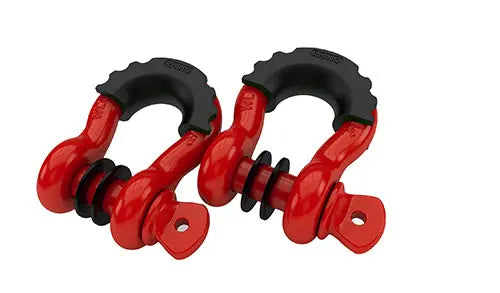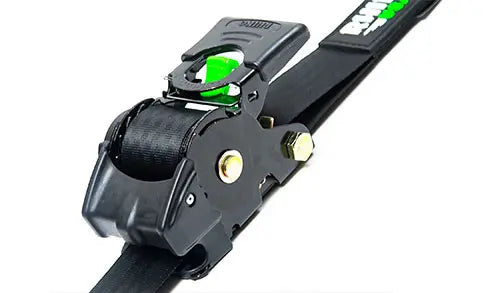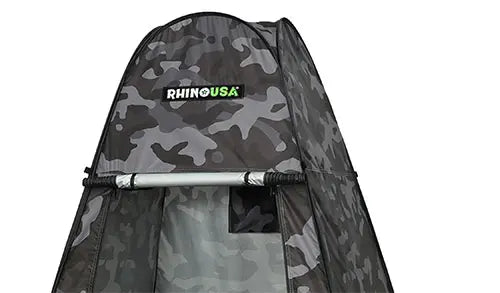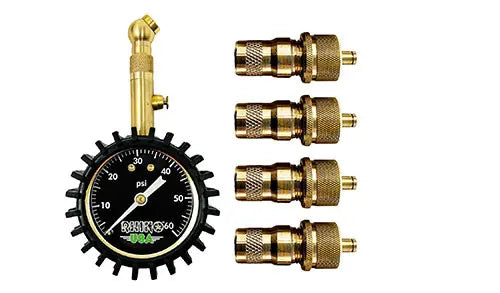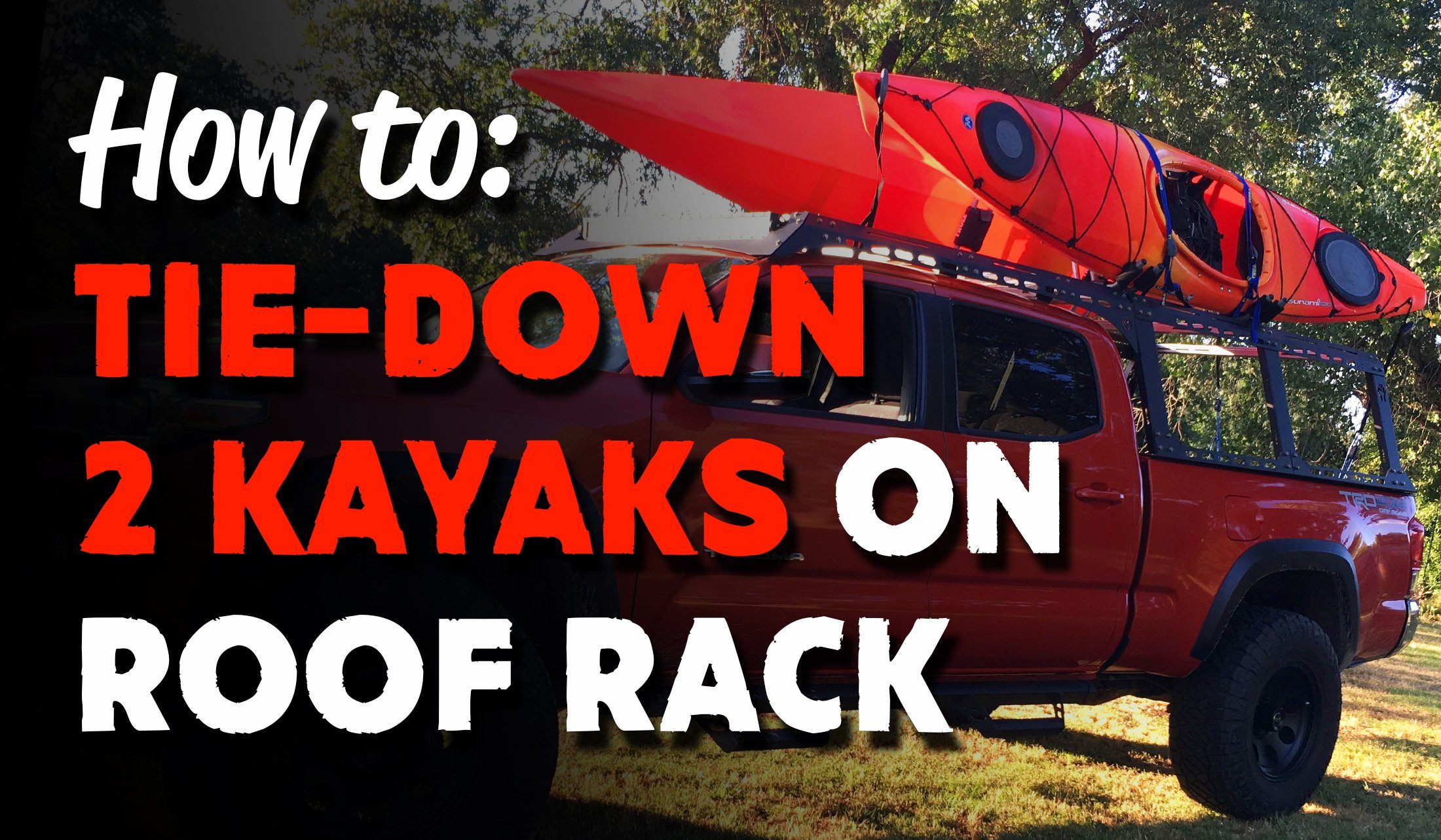
How to Strap Two Kayaks to a Roof Rack
Most factory-installed roof racks or aftermarket roof racks are capable of supporting and carrying two kayaks at a time. However, attempting to strap two kayaks down to your roof rack for the first time, may prove to be quite the challenge.
Imagine a world of endless waterways and picturesque paddling destinations waiting to be explored. If you're an avid kayaker, you know that the journey to these aquatic wonderlands often begins on land with the careful and secure transport of your kayaks. In this guide, we'll walk you through the essential steps and tips on how to strap two kayaks to a roof rack, ensuring a safe and stress-free start to your next kayaking adventure.
There are many ways to secure one kayak during transport, however, whether you're a seasoned paddler or new to the world of kayaking, you know that strapping down two kayaks can be much more of a task. We often get calls regarding this scenario. So we've decided to lay out the ground rules in this article, teaching you the steps for safely securing your two kayaks using straps. (Experts recommend 4 Cambuckle Tie-Down Straps for this)
1. Place your Tie-Down Straps on the Kayak Roof Rack
Take two straps and place them in the middle of your front crossbar, both straps should be resting down the center of your windshield. Now do the exact same with the rear crossbar, making sure both straps are now resting in the middle of your rear window. It's important to ensure your straps are not twisted and that they are easy to reach.
2. Place your first Kayak on the Roof Rack
Grab your Kayak and hoist it to one side of your roof rack. Try some different positions and find a good way for this kayak to sit on your vehicle. Be sure to keep this kayak as far towards one side as you can. (Driver's or passenger's side)
3. Strap your first Kayak down to the Roof Rack
Secure both the front and rear tie-downs over the first kayak, but be sure to leave some wiggle room as you may need to make some adjustments after your second kayak is placed.
4. Place your second Kayak on your roof rack.
Take your second kayak and lift it onto your roof rack, now push it up against the first one. If you find you have lots of room in-between both kayaks, you can choose to leave it to prevent the two rubbing up against each other. However, if you have a small roof rack and find yourself tight on space, adjust your first kayak and make room for both kayaks to fit centered on your roof rack.
5. Strap down your second Kayak
Place the 2nd set of front and rear straps over your second kayak, now secure them. Tighten these straps so that your second kayak is completely secured to your roof rack.
6. Go back and tighten down your first Kayak
Don't forget your first kayak! Check and make sure the kayak is still sitting on your roof rack correctly, now tighten your straps and make sure it's secured.
7. Recheck your Tie-Down Straps for Tightness
Take a quick walk around your vehicle and confirm that your kayaks are strapped down correctly and tightly, wrap up any excess strap around your crossbars to prevent them blowing in the wind. If the position of one kayak is off, you can loosen up both kayaks and reset them following the above steps.
Featured Product: Rhino USA Cambuckle Tie Down Straps

The Most Common Mistake:
Hoisting the two kayaks first, and then attempting to loop the straps around the kayaks and roof rack. This will make everything much more difficult! Instead, try placing the straps into position first, then use separate straps to tie-down each kayak individually.
Tying two or more kayaks down together with a single strap will cause your kayaks to shift during transportation. Do not do this! Its not worth the risk.
Advice From Our Experts:
- Always be sure that your straps have no frayed, and that the hooks and buckles are in good condition. Don't run the risk of using old straps, worn-down straps.
- When shopping for a good set of straps, keep your eyes peeled for three things; Length, Quality, and Reviews.
- Dry off your Kayak before strapping it to your roof rack! This may sound strange, but it's a great way to ensure your straps live a long life. Wet kayaks can soak your tie down straps, and when mixed sunlight, this can damage your straps in the long run.
MUST READ: What Size Kayak Do I Need?
We hope you enjoyed learning about how to tie down two kayaks on a roof rack, and are prepared for your next kayak journey. As always, Rhino USA is the leader in strap technology and the gold standard in off-road and recovery gear. All of our products come with a lifetime warranty, so click the link below and make sure you never have to buy twice!
Caring for Your Kayaks on the Road and Beyond
Ensuring the safety and longevity of your kayaks goes beyond the actual transport. Here are some essential tips to care for your kayaks during transit and beyond:
1. Regular Inspection:
- Before and after each trip, inspect your kayaks for any signs of damage, wear, or potential issues. Look for cracks, scratches, or loose hardware that may have occurred during transport.
2. Cleaning and Maintenance:
- After kayaking adventures, rinse your kayaks with fresh water to remove any saltwater or debris. Clean them using a mild soap and water solution to maintain their appearance and prevent deterioration.
3. UV Protection:
- Prolonged exposure to sunlight can cause fading and damage to your kayak's hull. Store your kayaks in a shaded area or use UV-resistant kayak covers when not in use.
4. Storage:
- When storing your kayaks, use padded kayak racks or storage systems that provide proper support and prevent warping. Avoid leaning them against hard surfaces for extended periods.
5. Secure Straps and Accessories:
- Even when not in use, make sure your kayak straps and accessories are securely stowed to prevent any wind-induced vibrations or potential damage during storage.
6. Lubrication:
- Periodically lubricate the moving parts of your kayak, such as hatches, rudder mechanisms, and footrests, to ensure they function smoothly.
7. Kayak Covers:
- Consider investing in kayak covers to protect your kayaks from dust, dirt, and potential environmental hazards during storage.
8. Regular Maintenance:
- Follow manufacturer recommendations for any specific maintenance procedures for your kayak model, including checking and tightening hardware, inspecting seals, and lubricating moving parts.
By incorporating these care and maintenance practices into your kayaking routine, you'll not only extend the life of your kayaks but also ensure that they remain in optimal condition for your next exciting paddling adventure.
FAQ's
How many calories does kayaking burn?
Studies show that kayaking is a great form of exercise and burns approximately 200 calories per half hour. However, calories burned during a certain exercise varies greatly depending on body weight, gender, age, and intensity, among other things. The calories burned during kayaking is comparable to that of walking.
How much does a kayak weigh?
Most kayaks weigh around 35 pounds, however, kayaks come in different sizes and materials and therefore, the weight can range between 20-70 pounds. Tandem kayaks are the heaviest since they are able to hold two people, and recreational kayaks are often times the lightest kayaks.
- Choosing a selection results in a full page refresh.


